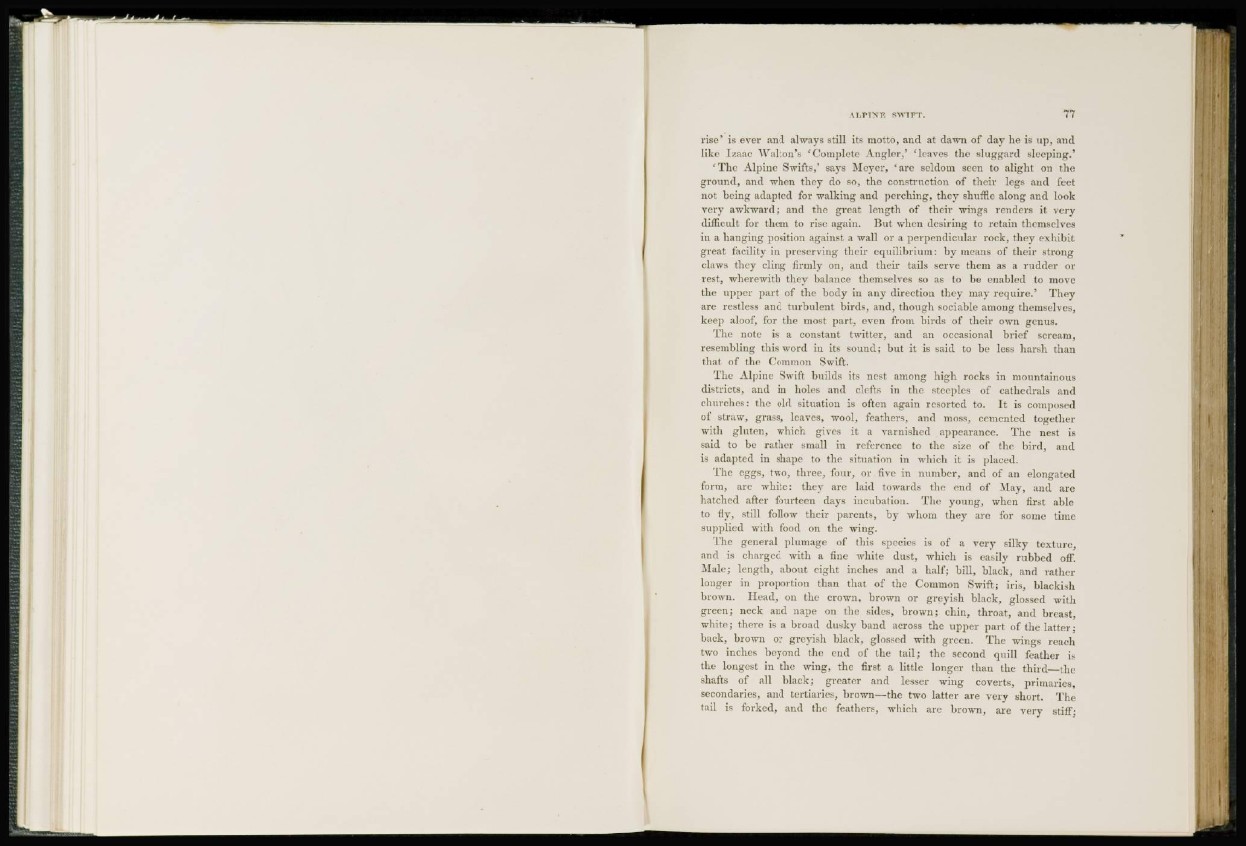
rise' is ever and always still its motto, and at dawn of day he is up, and
like Izaac Walton's 'Complete Angler/ 'leaves the sluggard deeping.'
'The Alpine Swifts/ says Meyer, 'are seldom seen to alight on the
ground, and when they do so, the construction of their legs and feet
not being adapted for walking and perching, they shuffle along and look
very awkward; and the great length of their wings renders it very
difficult for them to rise again. Bid when desiring to retain themselves
in a hanging position against a wall or a perpendicular rock, they exhibit
great facility in preserving their equilibrium: by means of their strong
claws they cling firmly on, and their tails serve them as a rudder or
rest, wherewith they balance themselves so as to he enabled to move
the upper part of the body in any directiou they may require.1 They
arc restless and turbulent birds, and, though sociable among themselves,
keep aloof, for the most part, even from birds of their own genus.
The note is a constant twitter, and an occasional brief scream,
resembling this word in its sound; but it is said to be less harsh than
that of the Common Swift.
The Alpine Swift builds its nest among high rocks in mountainous
districts, and in holes and clefts in the steeples of cathedrals and
churches: the old situation is often again resorted to. It is composed
of straw, grass, leaves, wool, feathers, and moss, cemented together
with gluten, which gives it a varnished appearance. The nest is
said to be rather small in reference to the size of the bird, and
is adapted in shape to the situation in which it is placed.
The eggs, two, three, four, or five in number, and of an elongated
form, arc white: they are laid towards the end of May, and arc
hatched after fourteen days incubation. The young, when first able
to fly, still follow their parents, by whom they are for some time
supplied with food on the wing.
The general plumage of this species is of a very silky texture,
and is charged with a fine white dust, which is easily rubbed off.
Male; length, about eight inches and a half; bill, black, and rather
longer in proportion than that of the Common Swift; iris, blackish
brown. Head, on the crown, brown or greyish black, glossed with
green; neck and nape on the sides, brown; chin, throat, and breast,
white; there is a broad dusky band across the upper part of the latter;
back, brown or greyish black, glossed with green. The wings reach
two inches beyond the end of the tail; the second quill feather is
the longest in the wing, the first a little longer than the third—the
shafts of all black; greater and lesser wing coverts, primaries,
secondaries, and tertiarics, brown—the two latter are very short. The
tail is forked, and the feathers, which arc brown, are very stiff;